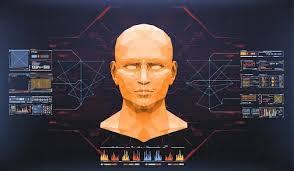The Rise of Digital Humans (AI Avatars): Shaping the Future of Human-Computer Interaction

Digital Human, often referred to as AI Avatars, represents one of the most groundbreaking innovations in artificial intelligence and digital technology. These virtual beings are designed to look, sound, and behave like real humans, providing users with highly personalized and interactive experiences. Unlike traditional chatbots or static digital assistants, digital humans combine advanced AI algorithms, natural language processing (NLP), computer vision, and emotional intelligence to communicate in a human-like manner. Their lifelike facial expressions, body language, and conversational abilities make them increasingly popular across industries ranging from customer service to healthcare, education, entertainment, and corporate training.
One of the key drivers behind the rise of AI avatars is the demand for more engaging and natural digital interactions. Businesses are moving beyond text-based chatbots, seeking solutions that can simulate real human conversations and emotional connections. For instance, a digital human in retail can greet customers, recommend products, and respond to queries just as a human sales associate would. In healthcare, AI avatars are being deployed as virtual nurses or therapists, offering patients companionship, answering basic medical questions, and even providing mental health support. The sense of empathy and relatability they bring to interactions is what sets them apart from conventional AI tools.
The entertainment and media industry has also embraced digital humans, creating virtual influencers, actors, and brand representatives who can interact with audiences in real time. These avatars can host live events, participate in video campaigns, and even evolve based on fan feedback, making them valuable assets for brands and celebrities. Moreover, in education, AI avatars are being used as tutors or mentors, making learning more interactive, personalized, and accessible to students worldwide. By offering a human-like presence, they help bridge the gap between technology and human emotion, ensuring that digital experiences feel less transactional and more meaningful.
Technological advancements such as deep learning, facial recognition, and voice synthesis play a critical role in enabling AI avatars. Companies are investing heavily in developing hyper-realistic avatars that can mimic micro-expressions, gestures, and natural speech patterns. As the metaverse and virtual reality (VR) ecosystems expand, digital humans are expected to become key facilitators of immersive experiences. They can serve as guides, co-workers, or companions in virtual environments, making the digital world feel more authentic and human-centered.
However, the rapid adoption of digital humans also brings challenges and ethical considerations. Concerns around data privacy, emotional manipulation, and over-reliance on AI avatars are growing. Additionally, the potential for misuse—such as creating deepfake avatars for misinformation—highlights the need for strict regulations and ethical frameworks. Striking the right balance between innovation and responsibility will be crucial as digital humans become more deeply integrated into everyday life.
Source - https://www.marketresearchfuture.com/reports/digital-human-ai-avatars-market-12224
Digital humans (AI avatars) are revolutionizing human-computer interaction by making it more natural, empathetic, and engaging. They are no longer just futuristic concepts but practical tools shaping industries and redefining customer experiences. With continued advancements in AI, VR, and emotional intelligence, digital humans are poised to become integral companions in our personal, professional, and social lives, symbolizing a future where technology and humanity coexist seamlessly.
- Art
- Causes
- Crafts
- Dance
- Drinks
- Film
- Fitness
- Food
- الألعاب
- Gardening
- Health
- الرئيسية
- Literature
- Music
- Networking
- أخرى
- Party
- Religion
- Shopping
- Sports
- Theater
- Wellness
